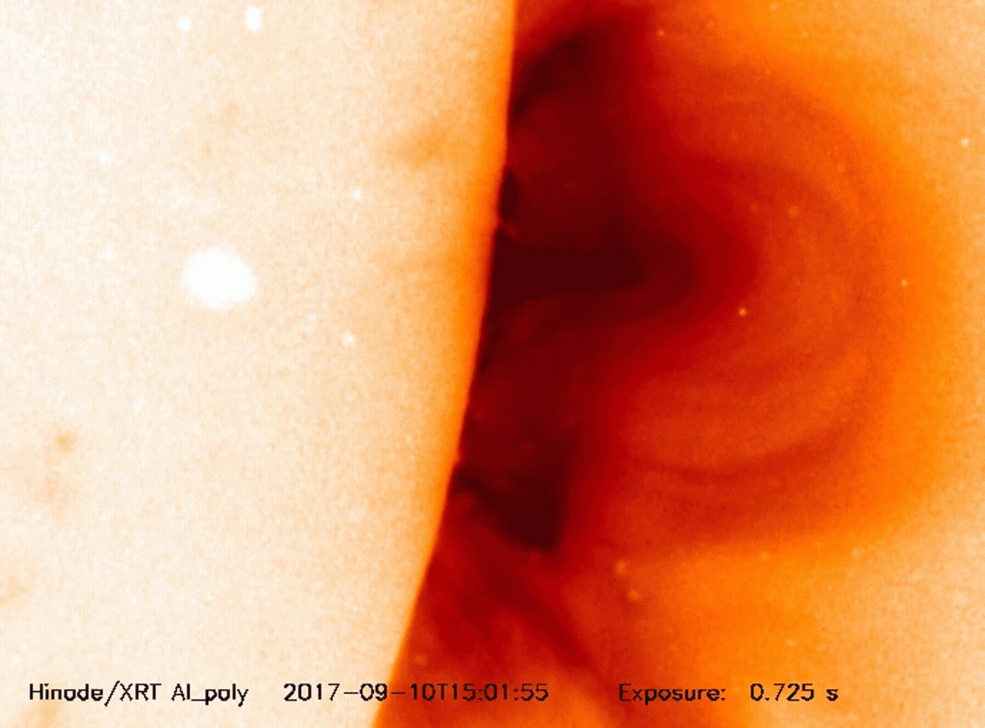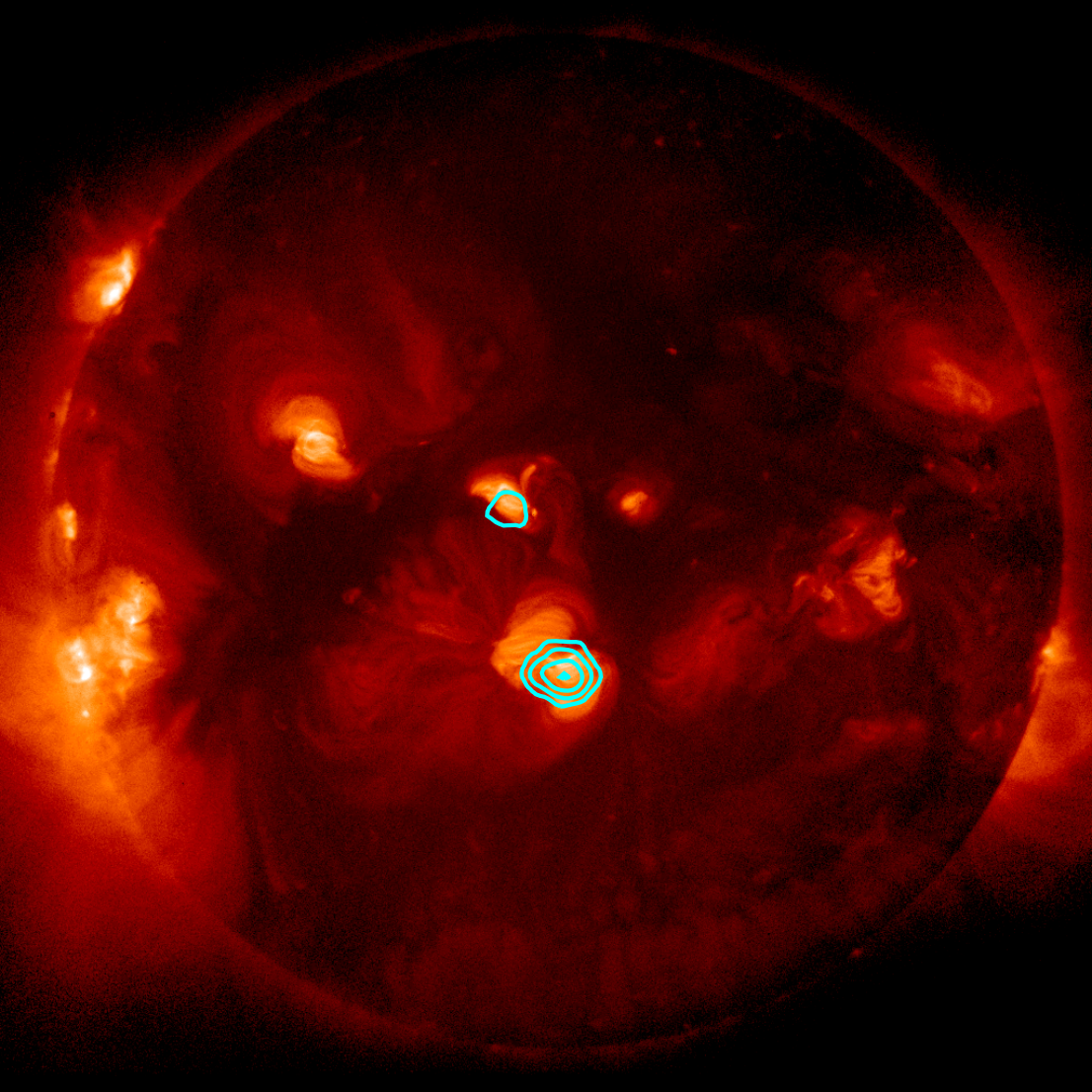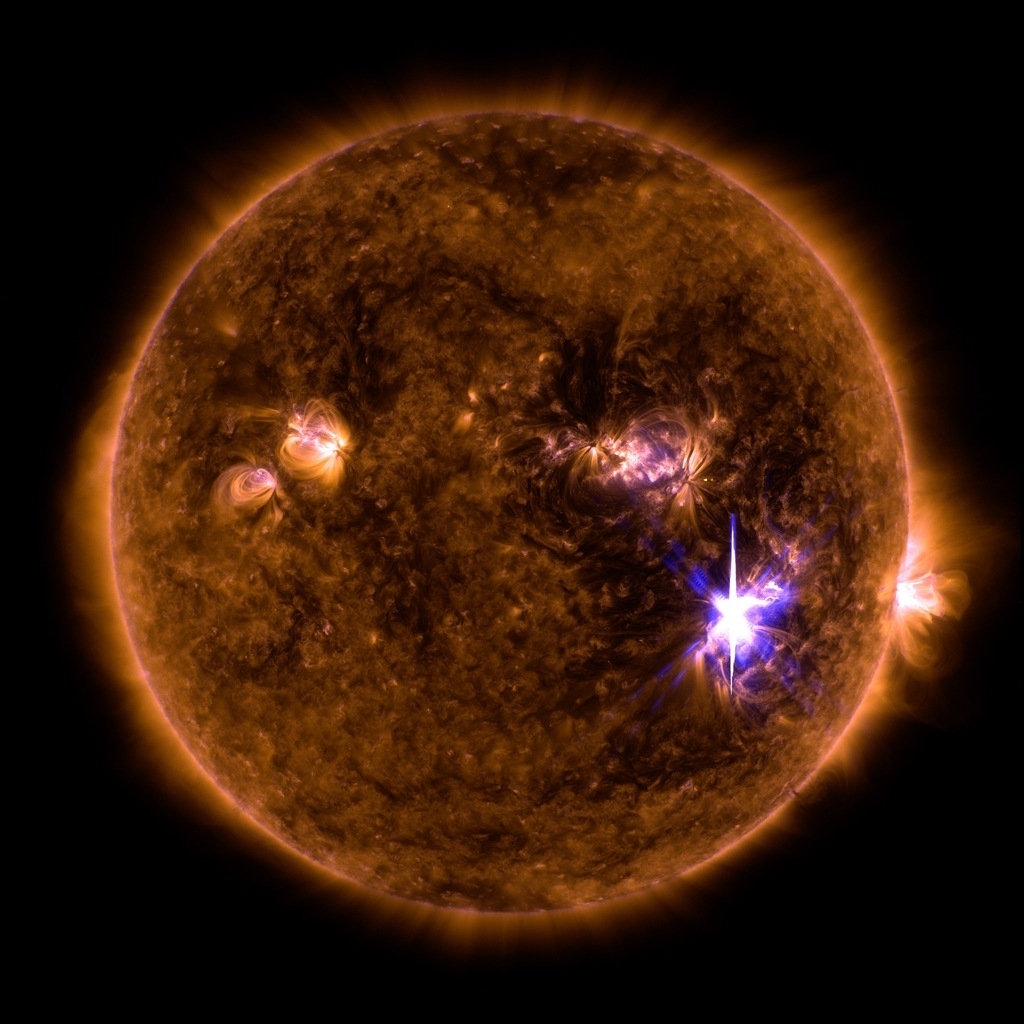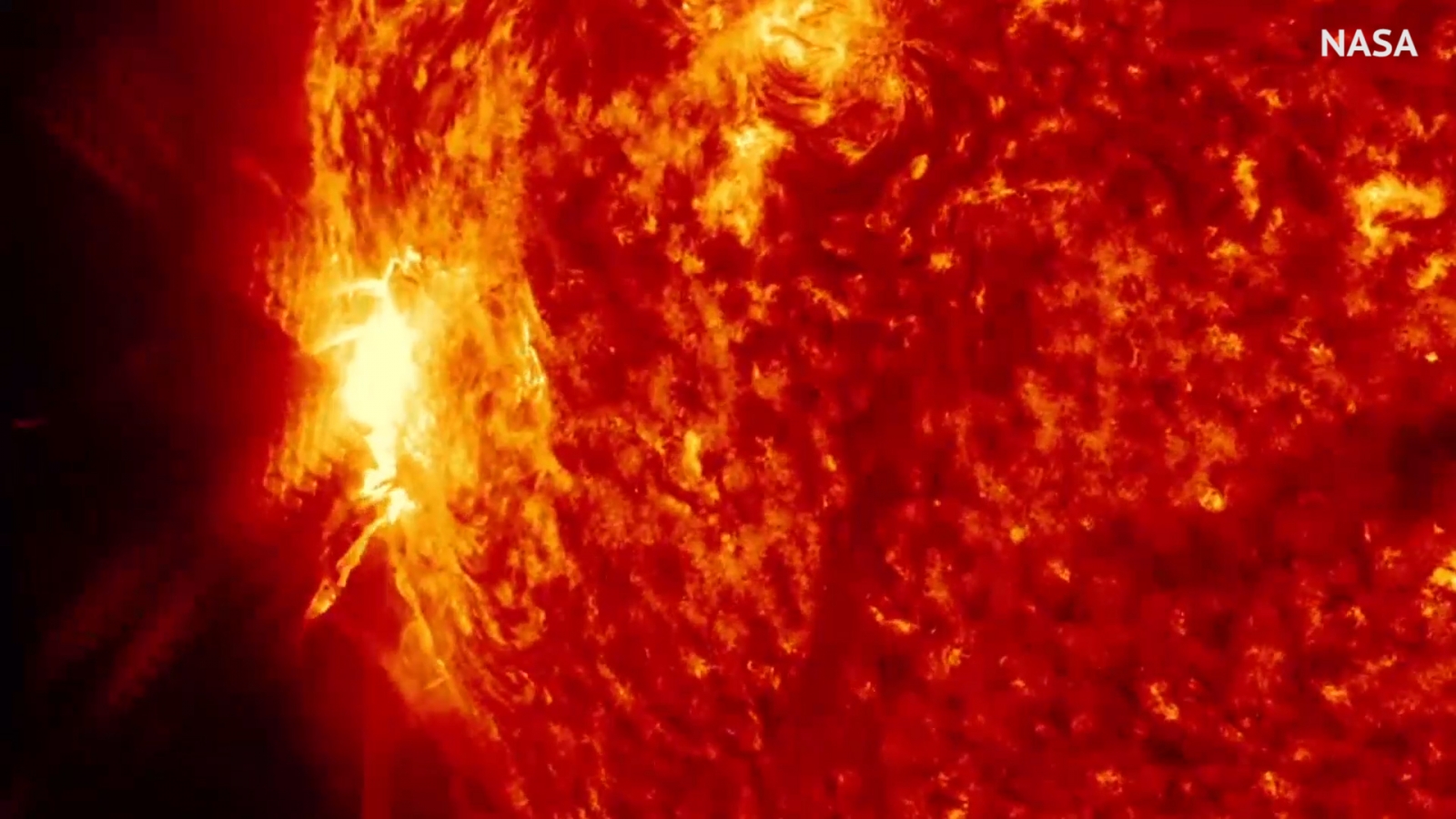The Sun's strongest magnetic field ever measured came from a sunspot wider than Jupiter
The field was expelled in the same month as the record-breaking flare shot out of the Sun.

In February of 2012 one of the largest recorded solar flares hit Earth. A magnetic field occurred earlier in the same month before the flare and scientists have finally figured out where it came from.
To understand what this means, one needs to first look at the sequence of events that took place in February of 2012. Starting on 4 February, scientists began recording a massive magnetic field coming off the Sun, reports Science Alert. The findings were first published in the Astrophysical Journal Letters.
Astronomers then recorded a sunspot complex that was over 180,000km across called AR1967, which by 24 February morphed into the AR1990. It went on to spit out a massive X4.9-class solar flare on 25 February.
Scientists knew right away that the solar flare had emanated from the sunspot, but the magnetic field that preceded it was a mystery until a team from the National Astronomical Observatory (NAO) of Japan found that the field was a result of a gas outflow that happened because of one sunspot in the complex pushing against another one, notes the report.
Sunspots, called "Active Regions" and are coded with the prefix "AR", appear like holes on the surface of the Sun, notes the report. They are also darker and cooler than their visible surroundings — region called the photosphere. Such regions are caused by magnetic fields and appear normally from East to West pairs with opposing polarities.
The umbra, or the darkest part of a sunspot is also the region with the strongest magnetism. In fact, it can be up to 1,000 times stronger than its surrounding areas and is seen extended vertically. The surrounding part of the photosphere, which is lighter and brighter is called the penumbra. This region also has a magnetic field, but this one is arranged horizontally, explains the report.
Researchers from the NOA found that the magnetic field from the AR1976 had a strength of 6,250 gauss — more than double the strength of the fields found in most other sunspots which is around 3,000 gauss.







Also, the team found that the field did not come out of an umbra either. In fact, it had come out of a lighter region between the two sunspots. The HINODE (a solar optical telescope) has been observing the sunspot for a long time now and researchers were able to verify their data over the next few days.
They found that the strong magnetic field remained in the penumbra between the two umbrae, notes the report. The conclusion was that the strong magnetic field was from the field of the southern spot's penumbra and that the horizontal gas flows were compressing the northern spot's magnetic fields.





















